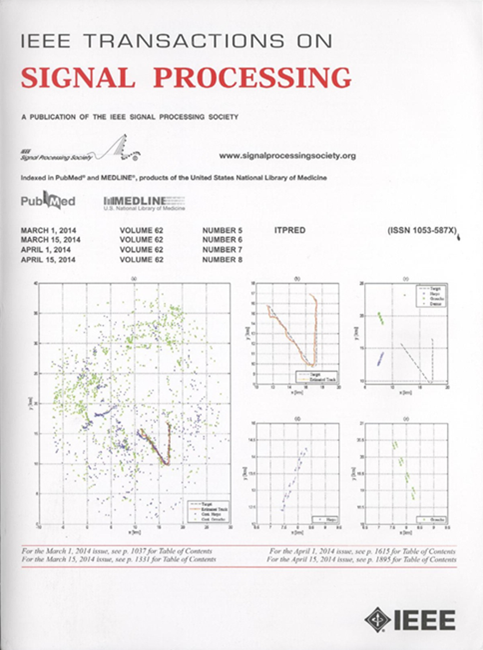三阶和差分展开:一种基于三阶累积量的阵列扩展策略
IF 4.6
2区 工程技术
Q1 ENGINEERING, ELECTRICAL & ELECTRONIC
引用次数: 0
摘要
近年来,针对基于高阶累积量的欠确定到达方向(DOA)估计,提出了许多高阶稀疏线性阵列(sla)的设计方案,这些方案利用发电机阵列的差分共阵(DCA)和和共阵(SCA)来构建一个大型连续虚拟共阵,从而显著增加了均匀自由度(udof)的数量。然而,这种处理对发电机阵列提出了很高的要求,这需要长时间连续的DCA和SCA。此外,由于DCA和SCA之间的冗余减少,派生阵列的鲁棒性容易下降。为此,本文提出了一种三阶sla的替代设计方案,即三阶和差展开(To - sde),该方案不再通过移位因子将DCA和SCA分开,而是将它们视为一个统一的整体。在这样做时,发电机阵列的最理想的特性被保留,如连续虚拟共阵列的大小,抗互耦性和抗传感器故障的鲁棒性,同时实现了从基于和差分共阵列的二阶sla到三阶sla的映射。通过选择合适的发生器阵列,可以在各种场景下获得良好的DOA估计性能。本文章由计算机程序翻译,如有差异,请以英文原文为准。
Third-Order Sum-Difference Expansion: An Array Extension Strategy Based on Third-Order Cumulants
Recently, numerous design schemes for high-order sparse linear arrays (SLAs) have been introduced for underdetermined direction-of-arrival (DOA) estimation based on high-order cumulants, which utilize both difference co-array (DCA) and sum co-array (SCA) of the generator arrays to construct a large consecutive virtual co-array, achieving a significant increase in the number of uniform degrees-of-freedom (uDOFs). However, this processing places high demands on the generator arrays, which require both long consecutive DCA and SCA. In addition, the robustness of the derived array is prone to deterioration, due to reduced redundancy between DCA and SCA. To that end, in this paper, an alternative design scheme for third-order SLAs termed third-order sum-difference expansion (TO-SDE) is proposed, which no longer separates DCA and SCA by a shift factor, but considers them as a unified whole. In so doing, most desirable characteristics of the generator array are preserved, such as the size of consecutive virtual co-array, resistance to mutual coupling, and robustness against sensor failures, while the mapping from the sum-difference co-array based second-order SLAs to the third-order is achieved. By selecting the appropriate generator array, excellent DOA estimation performance can be attained in various scenarios.
求助全文
通过发布文献求助,成功后即可免费获取论文全文。
去求助
来源期刊

IEEE Transactions on Signal Processing
工程技术-工程:电子与电气
CiteScore
11.20
自引率
9.30%
发文量
310
审稿时长
3.0 months
期刊介绍:
The IEEE Transactions on Signal Processing covers novel theory, algorithms, performance analyses and applications of techniques for the processing, understanding, learning, retrieval, mining, and extraction of information from signals. The term “signal” includes, among others, audio, video, speech, image, communication, geophysical, sonar, radar, medical and musical signals. Examples of topics of interest include, but are not limited to, information processing and the theory and application of filtering, coding, transmitting, estimating, detecting, analyzing, recognizing, synthesizing, recording, and reproducing signals.
 求助内容:
求助内容: 应助结果提醒方式:
应助结果提醒方式:


